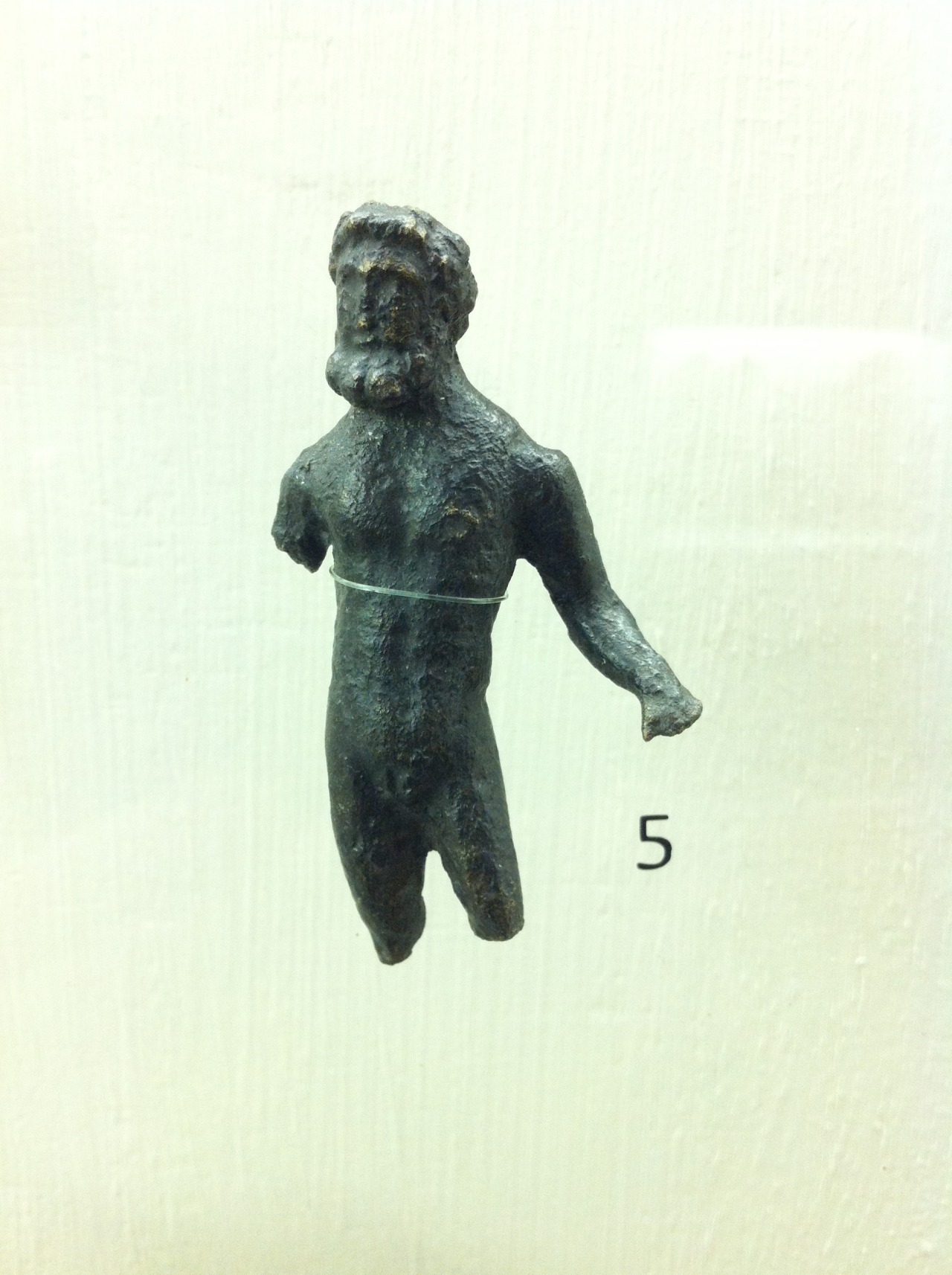Your Custom Text Here
Bronze antiquities at Derby Museum
5. Bronze figure of Jupiter, the chief god of Rome. Small figures of gods were kept in shrines in the house.
8.Pewter figure of a sea-nymph riding a seahorse. The sea-nymphs, or nereids, were attendants of the sea god Neptune. The figure is a fragment from a decorated bowl or skillet. 2nd century AD, found at Little Chester, Derby.
10. Bronze phallic amulet. This kind of amulet was often worn by soldiers. it was thought to make its wearer more powerful and virile. 1st century AD, found at Little Chester, Derby.
Roman artefacts found in Derbyshire
During a research trip to Derby Art Gallery & Museum, I came across a large selection of bronze items on display found within Derby City and the Derbyshire region.
This post relates to the Roman Occupation of the county and is taken from the exhibition within the museum.
“Iron, Bronze, Gold, Silver, Lead and Tin were all worked for many centuries before the Romans came to Britain. Under the Roman occupation demand for these metals led to massively increased production. In Derbyshire lead and iron were particularly important industries.
Lead - Derbyshire was an important lead mining area in the Roman period. The lead industry appears to have been based in the Derbyshire Dales, at a place called Lutudarum, perhaps near Carsington.
Twenty-nine ingots (called ‘pigs’) of Roman lead from Derbyshire have been found, weighing an average of 80-90kg each. Inscriptions on them indicate that private companies were running mines, probably under state license.
Lead was used for a variety of purposes including water tanks and pipes, weights, containers and figurines. Few of these survive as lead is usually melted down for re-use rather than thrown away.
Iron - Iron was widely used in Roman Britain. Tools included axes, hammers, saws and chisels. Soldiers needed daggers, swords, spears and harness fittings. Iron was also used for hinges, locks and keys, nails and window fittings.
Iron ore was usually obtained by open-cast mining. The ore was roasted in an open hearth and then smelted in a furnace, producing iron bloom which could then be hammered into wrought iron by a blacksmith.
Archaeologists have found fifteen iron smithing hearths at the Roman industrial area at Derby Racecourse.”
Find out more about the items on display at Derby City Art Gallery & Museum.



